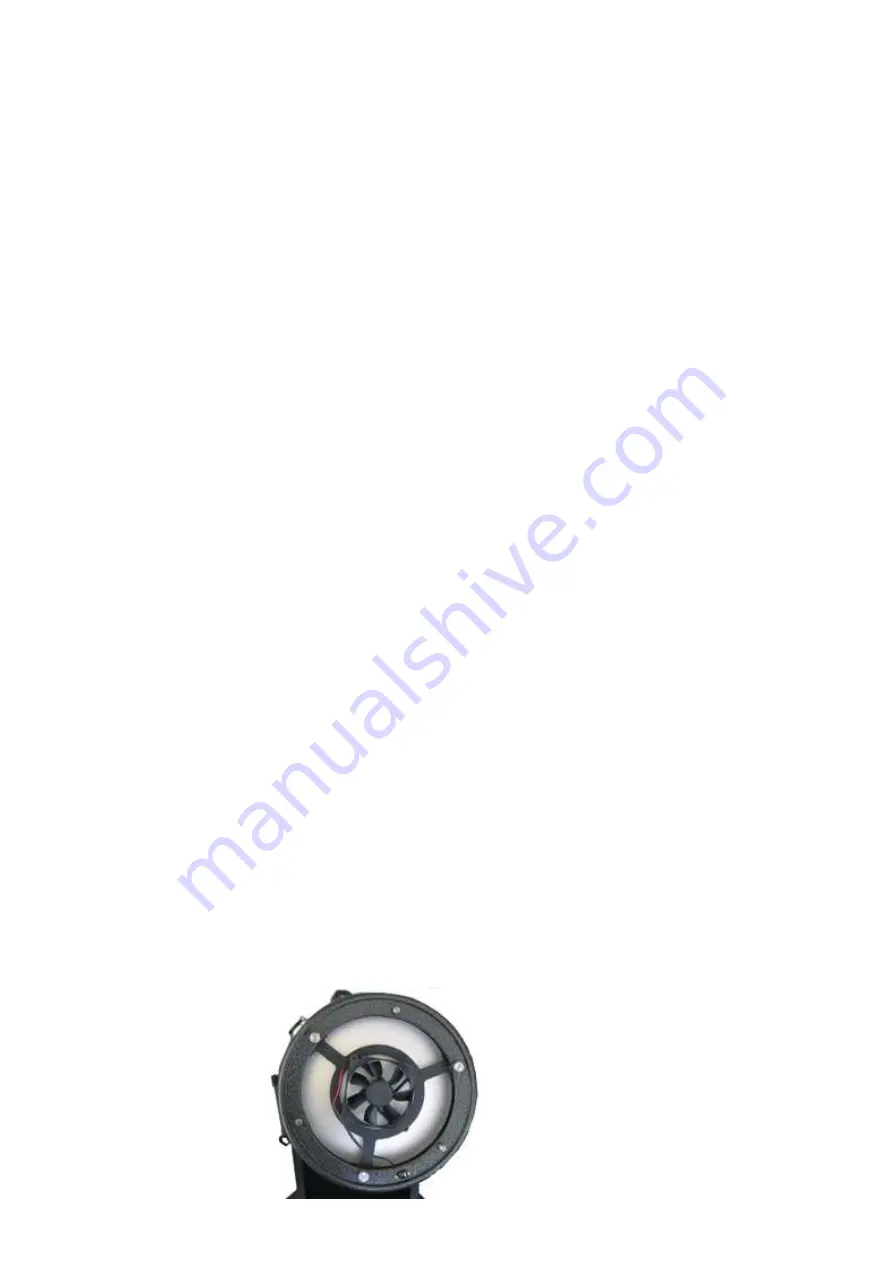
11
5. Astronomical Observing
Observing Tips
A. Site Selection
Pick a location away from street lights and bright
yard lighting. Avoid viewing over rooftops and
chimneys, as they often have warm air currents
rising from them, which distort the image seen in
the eyepiece. Similarly, you should not observe
through an open window from indoors. Better yet,
choose a site out-of-town, away from any “light
pollution”. You’ll be stunned at how many more stars
you’ll see! Most importantly, make sure that any
chosen site has a clear view of a large portion of the
sky.
B. Seeing and Transparency
Atmospheric conditions play a huge part in quality of
viewing. In conditions of good “seeing”, star
twinkling is minimal and objects appear steady in
the eyepiece. Seeing is best overhead, worst at the
horizon. Also, seeing generally gets better after
midnight, when much of the heat absorbed by the
Earth during the day has radiated off into space.
Typically, seeing conditions will be better at sites
that have an altitude over about 3000 feet. Altitude
helps because it decreases the amount of distortion
causing atmosphere you are looking through.
A good way to judge if the seeing is good or not is to
look at bright stars about 40° above the horizon.
If the stars appear to “twinkle”, the atmosphere is
significantly distorting the incoming light, and views
at high magnifications will not appear sharp. If the
stars appear steady and do not twinkle, seeing
conditions
are
probably
good,
and
higher
magnifications
will
be
possible.
Also,
seeing
conditions are typically poor during the day. This is
because the heat from the Sun warms the air and
causes turbulence. Good “transparency” is especially
important for observing faint objects. It simply
means the air is free of moisture, smoke, and dust.
All tend to scatter light, which reduces an object’s
brightness.
C. Cooling the Telescope
All optical instruments need time to reach “thermal
equilibrium” to achieve maximum stability of the
lenses and mirrors, which is essential for peak
performance. When moved from a warm indoor
location, outside to cooler air (or vice-versa),
a telescope needs time to cool to the ambient
temperature.
All Bintel Dobsonian models have a Cooling Fan to
assist in the cooling
down period prior to use.
Caution:
Cooling
fan
should be turned off
before the scope is
used. The battery pack
normally sits in the
bottom of the rocker.
D. Let Your Eyes Dark-Adapt
Do not expect to go from a lighted house into the
darkness of the outdoors at night and immediately
see faint nebulas, galaxies, and star clusters- or
even very many stars, for that matter. Your eyes
take about 30 minutes to reach perhaps 80% of
their full dark-adapted sensitivity. Many observers
notice improvements after several hours of total
darkness. As your eyes become dark-adapted, more
stars will glimmer into view and you will be able to
see fainter details in objects you view in your
telescope. Exposing your eyes to very bright
day-light for extended periods of time can adversely
affect your night vision for days. So give yourself
at least a little while to get used to the dark before
you begin observing. To see what you are doing
in the darkness, use a red-filtered flashlight rather
than a white light. Red light does not spoil your eyes’
dark adaptation like white light does. A flashlight
with a red LED light is ideal, or you can cover the
front of a regular incandescent flashlight with
red cellophane or paper. Beware, too, that nearby
porch and street lights and automobile headlights
will spoil your night vision.
Tracking Celestial Objects
The Earth is constantly rotating about its polar axis,
completing one full rotation every 24 hours; this is
what defines a “day”. We do not feel the Earth
rotating, but we can tell that it is at night by seeing
the apparent movement of stars from east to west.
This movement translates into a rate of .25° per mi-
nute, or 15 arc-seconds per second. (There are 60
arc-minutes in 1°, and 60 arc-seconds in one arc-
minute.) This is called the sidereal rate. When you
observe any astronomical object, you are watching a
moving target. This means the telescope’s position
must be slowly updated over time to keep an object
in the field of view. To keep the object in the
telescope’s field of view (to “track” it), the telescope
must be moved by small increments every now and
then, in the direction the object is moving. This is
easy to do with a Bintel Dobsonian because of its
buttery smooth motion on both axes. As the object
moves off toward the edge of the field of view, you
just lightly nudge the telescope to bring it back to
the center. You will notice that it is more difficult to
track objects when the telescope tube is aimed near-
ly straight up. This is inherent to the basic design
of the Dobsonian, and stems from the fact that there
is very little leverage to move in azimuth when the
tube is in a near-vertical position.
To gain more leverage, try grasping the tube close
to the altitude side bearings with both hands. Also,
when looking overhead, if the telescope cannot be
moved any more in altitude, rotate the tele-
scope 180° in azimuth to continue motion.
Remember that objects appear to move across
the field of view faster at higher magnifica-
tions. This is because the field of view be-
comes narrower.
















